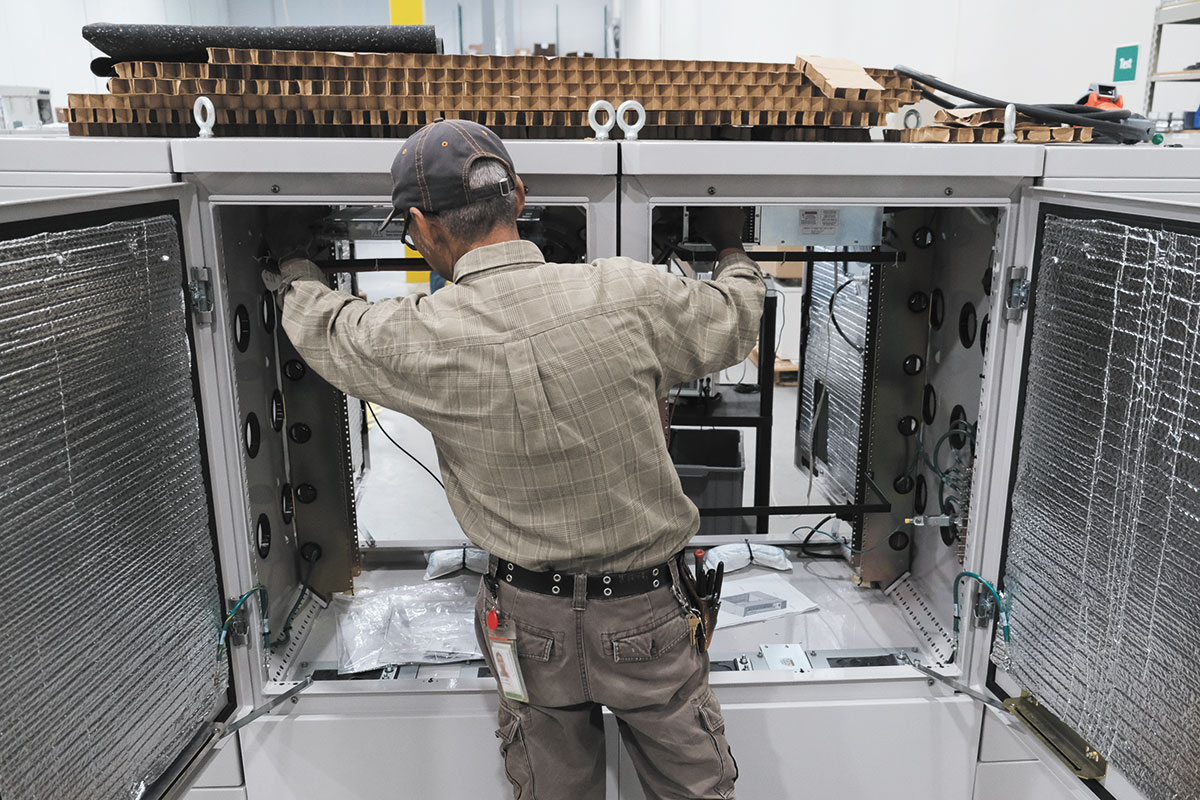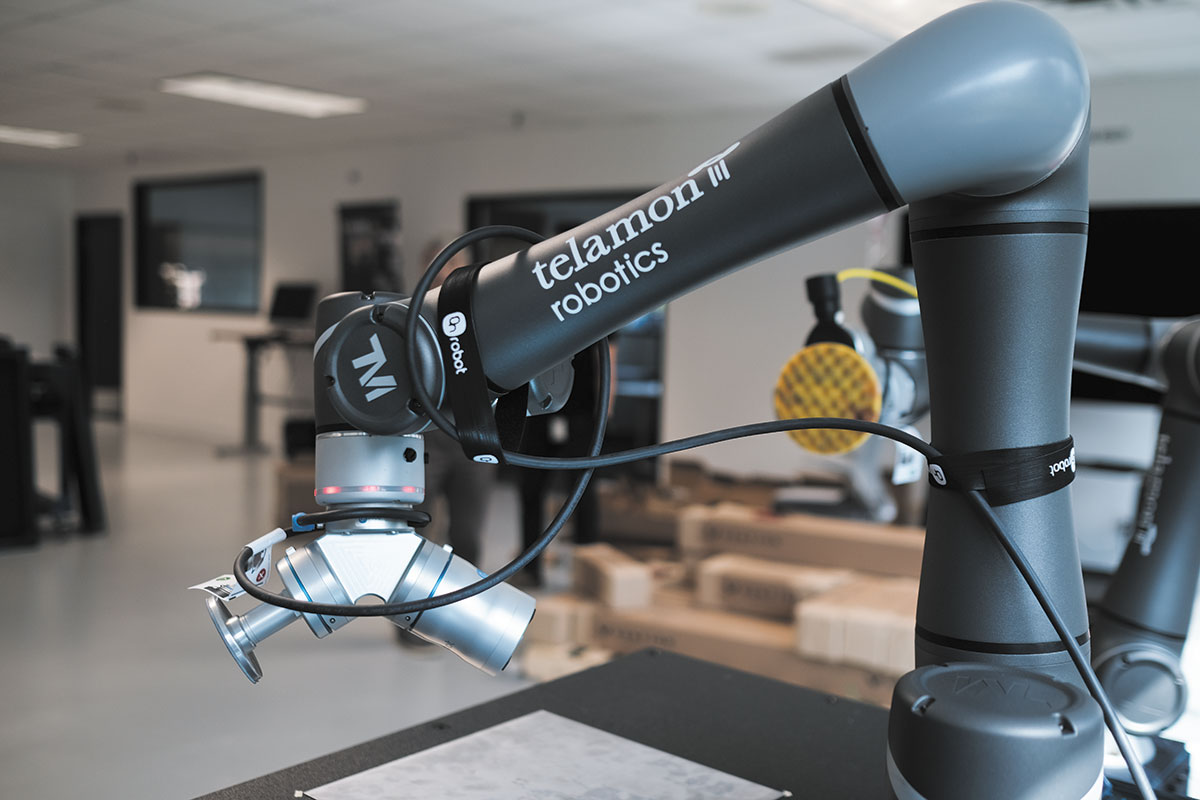Subscriber Benefit
As a subscriber you can listen to articles at work, in the car, or while you work out. Subscribe Now

Albert Chen emigrated in 1968 from his native Taiwan to the United States, where he earned a master’s degree in mathematical sciences from Portland State University in Oregon.
Chen worked for GTE in Indiana for 10 years before founding Telamon Corp. in 1985 to provide services to the telecom industry. In 2015, Chen retired—well, mostly—and turned the Carmel-based company over to his son, Stanley, who is CEO.
Today, Telamon operates in 13 states, India, Mexico and Macedonia and designs, builds and installs networks that support telecommunication networks, appliances and industrial processes. One core of that business is an electronic harness, which keep cables and wires integrated and organized so they transmit signals and electrical power. But Telamon is always seeking ways to diversify and created Telamon Ventures, where Albert Chen is still dabbling, to experiment with opportunities in energy and robotics
In an interview with IBJ, Stanley Chen said the company expects to hit $1 billion in revenue in fiscal year 2024. He also talks about cobots, artificial intelligence and leading a family company where his father, sister and two cousins are employed.

How do you describe what Telamon does?
In a nutshell, I would say this: We connect people and things.
So if you think about our telecommunications business, we enable the network infrastructure that will connect people, whether we’re having a voice call or we’re having a video call. We do all the behind-the-scenes infrastructure services—building a tower, designing where the antennas go, distributing the equipment, installing, laying cables. Ultimately, it’s about connecting people.
And in our industrial business, it’s about connecting things. So we build wire harnesses that are inside passenger vehicles. And over the past year, we’ve really built out a business where we’re building harnesses for consumer goods—cooktops, washers, dryers. These are harnesses that are sending electric signals throughout the device, throughout their environment.
What has been the evolution of the company?
I think there’s really kind of two themes to think about. The first theme is: If we get our toehold in an area, we want to continue to move up the ladder from a value standpoint.
So we got our start within telecommunications providing distribution services. We were managing the logistics and the supply chain for some networking equipment for AT&T. … Then we just kind of started moving up the ladder.
We’re managing the logistics of these boxes; what if we started assembling them? What if we started configuring them? What if we started testing them? What if we started installing them? Once we ship them out to a location, someone’s got to install it. Why can’t it be us? Hey, if we’re installing it, someone also has to design that environment. So why don’t we do that? And so we just over time continue to build out this turnkey solution, so that we can provide all the services related to that box.
The second theme has been: How do we continue to diversify and take that core competency and expand it into some sort of adjacent area?
And so when we got into the industrial space, the way that we started that was really saying: Well, we have a bunch of supply chain capabilities and telecommunications. Can we provide supply chain services? … We were kind of in that automotive, … heavy-duty truck space. So we built a business out from there that went down this path of wire harnesses.
That’s really kind of how we built the business over time.
Almost three years ago, I came up to talk to your dad about cobots. Is that the newest thing you’re working on? What else is new?
So the cobots and even some of the energy stuff that we do is all part of what we call our Ventures Group. And so that is kind of our own little in-house startup incubator that we have to build out new businesses. A lot of the new ideas will start there. … We always have some new ideas coming through there.
When we think about kind of the mothership of Telamon, it’s more so in the telecom and the industrial space. Within that … we’re expanding our distribution footprint to consumer facing devices, such as cellphones, mobile, mobile handsets. And so for the Google Pixel, Samsung [Galaxy] S24, those sorts of things, all of our services historically have been focused on the back-end network. Over the past year, we’ve expanded that to say, what about the front end? What about the consumer-facing side?
And so we’re really growing the business on that distribution part. And so that’s been a really exciting growth area for us.
This won’t show up for this year’s results because it’s really just kind of started in earnest. But in ’24, that should be our first year north of a billion [dollars] in revenue. And so … we’ve had some really exciting growth in this part of the business.
Is it $1 billion for the entire company?
Yeah.
That’s a big milestone.
It is. It’s not official yet. We have to finish out the year, but based on everything that we’re seeing, that’s where we should be.

You mentioned smart phones as an example of moving into consumer-facing devices. How are you doing that?
It’s the same that we do with some of our legacy business. We’re managing the supply chain and the logistics of these devices. And we’re working hand in hand with our customers on some of their point-of-sale information so that we can help them with some of the forecasting.
At the end of the day, if you walk into a store and you’re ready to upgrade your device, the challenge that typically people have is they say: OK, I want the Samsung S24. I want the blue version, and I want the one with 256 megabytes. And they say, I’m sorry, I don’t have that blue. I have that in pink, or I have blue and 128. For example, in the Verizon ecosystem, there are 6,000 stores across the country. And so being able to manage the diversity of SKUs across the diversity of stores that requires some level of intelligence. And so that’s really where a company like Telemon steps in to say: Hey, let us help you, not only on the forecasting and demand planning, but then let us also help you with just-in-time delivery so that you’re not holding a ton of inventory at the stores.
When you think about logistics, it can be mind boggling. You can drill down into such a level of detail. It’s amazing that anything works smoothly.
That’s right. Everything takes more work than it seems like it should. But that’s what pays the bills.
So was the thought that cellphones made sense because you’re already in telecom?
That’s exactly right. Same customer set. … Same skill set. But just kind of expanding to a different part of that ecosystem.
Anything else that’s a new area for the company? Or something you’re tossing around that you can talk about at this point?
The other new area I touched on briefly is that within our industrial business, for the wire harnesses, we historically have always been focused on the automotive segment. And one of the things that we’ve been working on, frankly for a number of years, is to expand outside of automotive.
It’s hard to break into new segments, but we were able to successfully. And so we’re doing a ton of work right now with a major white-goods provider. And so that that was kind of a huge win for us against similar products and services that we’re providing. … It has been a fun adventure for us.
So where does that stand?
We’ve been shipping already. As an example, in FY 23, which are the numbers that you guys see, we probably had $0, maybe $100,000 in revenue from this white-goods segment. In FY 24, it’ll easily be $20-$25 million in in this [segment]. So zero to 25 in a single year.
What was it like to make the leap to appliance makers? That’s a whole different niche.
I think the logic was [that] we were looking at different industries that utilize wire harnesses that may have needed an opportunity. One of the value-adds, kind of unique positioning that we have within the automotive segment is that our harnesses in automotive, they all support safety applications, like the airbag and the seatbelt.
As a result, like of the key things that we have, of course, is quality, because at the end of the day, our customers always say: Hey, if you’re going to have a faulty airbag, do you want that in your mom’s car, your sister’s car, right? You don’t want it anywhere. And so we have zero-defect requirements across our business.
So being able to take that quality mindset into a new industry, where obviously if your washer breaks because of the harness, like it’s inconvenient, but it’s not the end of the world. But we say to the customer: Hey, look, the way that Telemon builds it, you’ll have zero defects, because that’s how we operate. … I think that was very compelling for them. And that’s what enabled us to go in and steal some [market] share.
How are you using artificial intelligence?
We are 100% leveraging it and trying to find more ways to leverage it for our internal processes to get more efficient. … What is really exciting for us is that in almost every single case … that we’re looking at, our employees would love for this to happen. There’s always this concern of, OK, are we replacing humans with machines? But a lot of the work that that we would look to have machines do for us, it’s the repetitive mindless work that no one really likes to do.
It’s a lot of data movement from one spot to the next or data interpretation and translation. And these are things that machines do really well. And they do it tirelessly and without error. So we are 100% looking at trying to develop more opportunities, more programs that we can we can do to offload some of that work and have our humans focus on some of the value-add intelligent work that only humans can do right now.
Is there anything that you’ve implemented with AI or that you’re testing that you’re able to talk about?
We’ve utilized some machine learning in terms of visual quality checks in our manufacturing process. So instead of having humans, which is how we used to do this, at the end of the line doing a manual check [that] our harnesses have zero defect required … we run that through a machine. We have a camera system, and we’ve trained that camera system utilizing AI to say: This is what a good harness will look like, and here’s some of the elements of a bad harness. And so it can automatically do those checks for us more accurately than human does.
When did you start implementing that machine-vision quality inspection?
It’s been probably a couple of years in terms of when we started it. Obviously, it’s becoming more and more robust over time.
You work with your dad, who founded the company. And I know he’s still fairly involved, even as an official retiree. And you work with other family members. What would you say is your best wisdom or best advice for successfully working with family members?
We have an outside-led board. And we have quarterly board meetings—it’s a fiduciary board, and I report to the board. So they hold me accountable. We have four outside directors.
In addition to that and separate from that, we have quarterly family meetings. It is our shareholders, which is the immediate family along with spouses. And so we’ll do a business update in those shareholder meetings, but it also creates a regular and predictable platform to have the conversations that you need to have.
So when there is that issue and you’re like, OK, well, when do I bring this up? How do I bring this up? Like you don’t want that showing up at Christmas dinner? So we have a family meeting—and in worst case, it’s three months away. There’s always this opportunity to say: OK, there’s something here that we need to talk about, either a question I have or concern I have or whatever.
So I think providing that kind of safe forum to have those discussions is really helpful.•
Please enable JavaScript to view this content.
